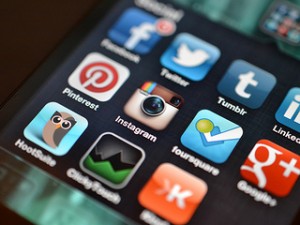 Facebook is the most popular social networking site in the world (except China) with the most members (81%) and the most active users (42%) according to December 2014 data from GlobalWebIndex. However, Facebook was the only large social network to see its active usage drop in 2014 (by 9%). At the same time, Facebook is facing an even bigger problem, which GlobalWebIndex refers to as passive Facebooking.
Facebook is the most popular social networking site in the world (except China) with the most members (81%) and the most active users (42%) according to December 2014 data from GlobalWebIndex. However, Facebook was the only large social network to see its active usage drop in 2014 (by 9%). At the same time, Facebook is facing an even bigger problem, which GlobalWebIndex refers to as passive Facebooking.
As 2014 drew to a close, GlobalWebIndex reports that only 52% of Facebook users were active users, which is a significant drop from 70% in 2012. When they do use Facebook, users are just browsing without actually posting or commenting on anything they read or see. In December 2014, two out of five Facebook users (not including China) used the site passively to browse but not to interact.
What’s causing the shift to passive Facebooking? Is it that people are becoming more interactive on other social media sites? Are they unhappy with privacy and tracking policies used on Facebook? Are they using their mobile devices to access Facebook which makes them less likely, statistically, to interact rather than just consume content? Have changes to how Facebook presents information in users’ news feeds affected their behavior?
While Facebook is seeing a decline in active usage (although still at levels higher than other social media sites), competitors are seeing huge gains. Pinterest grew its active users by 97% in 2014 while Tumblr grew active users by 95%. Snapchat was the fastest growing social/messaging application in 2014 (+57%), and YouTube is getting visits from more people (82% of internet users between the ages of 16 and 64) than Facebook (73%).
GlobalWebIndex also reports that the total amount of time that people spend on social networks continues to increase. In 2012, they spent an average of 1.61 hours per day on social networks, and in 2014, that number increased to 1.72 hours per day.
Bottom-line, social networking and social media overall continue to grow, but Facebook appears to already be moving past the maturity stage into the decline stage. If the trend toward passive usage continues, the company could be in big trouble very soon. Already, brands are unhappy with how Page updates are displayed to fans, making it nearly necessary to pay for advertising to get any brand exposure on the the site. For a site that depends on interaction of its users for many things, passive usage is a very big problem.
What do you think? Should Facebook be worried? Are you investing your 2015 social media time and online advertising budgets into Facebook at the same levels you have in the past or are you shifting your brand to other social sites? Leave a comment and share your thoughts.
Image: Teresa Howes
Susan Gunelius is the author of 10 marketing, social media, branding, copywriting, and technology books, and she is President & CEO of KeySplash Creative, Inc., a marketing communications company. She also owns Women on Business, an award-wining blog for business women. She is a featured columnist for Entrepreneur.com and Forbes.com, and her marketing-related articles have appeared on websites such as MSNBC.com, BusinessWeek.com, TodayShow.com, and more.
She has over 20 years of experience in the marketing field having spent the first decade of her career directing marketing programs for some of the largest companies in the world, including divisions of AT&T and HSBC. Today, her clients include large and small companies around the world and household brands like Citigroup, Cox Communications, Intuit, and more. Susan is frequently interviewed about marketing and branding by television, radio, print, and online media organizations, and she speaks about these topics at events around the world. You can connect with her on Twitter, Facebook, LinkedIn, or Google+.


